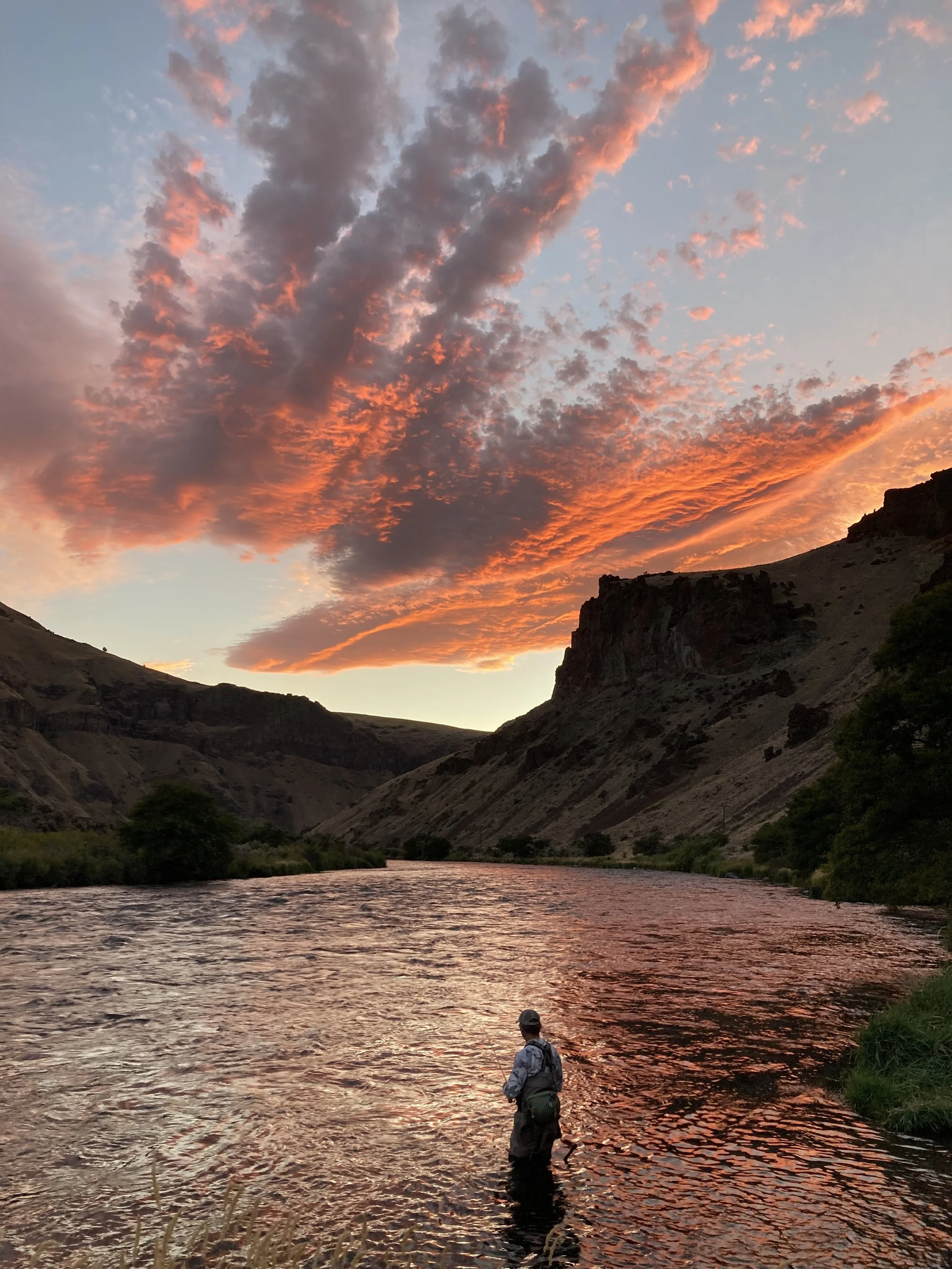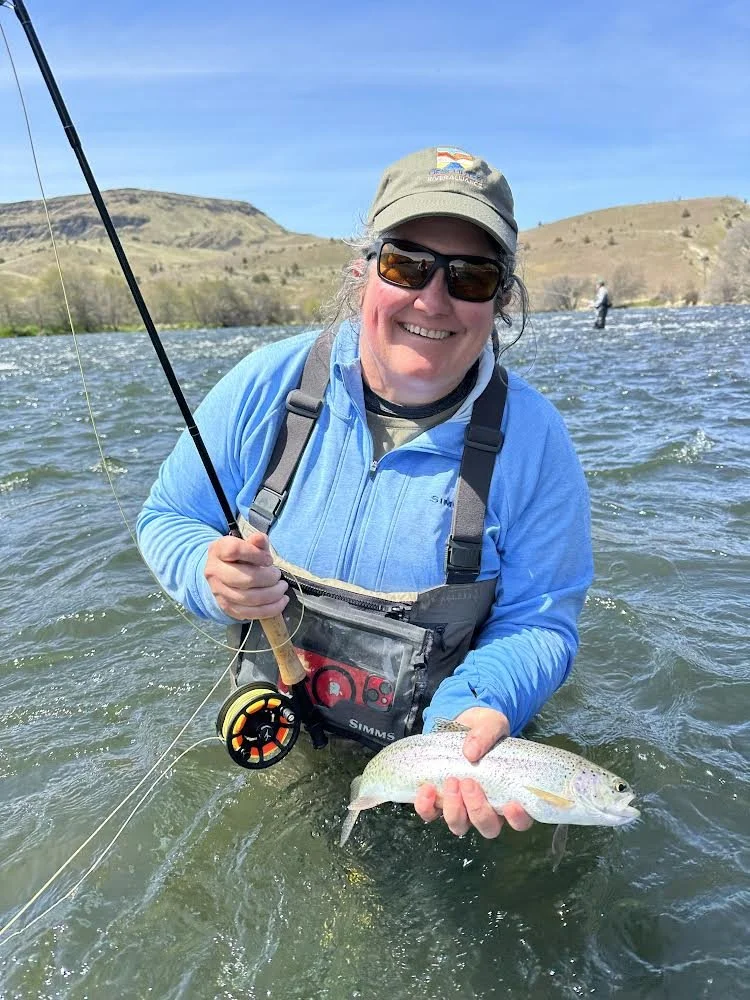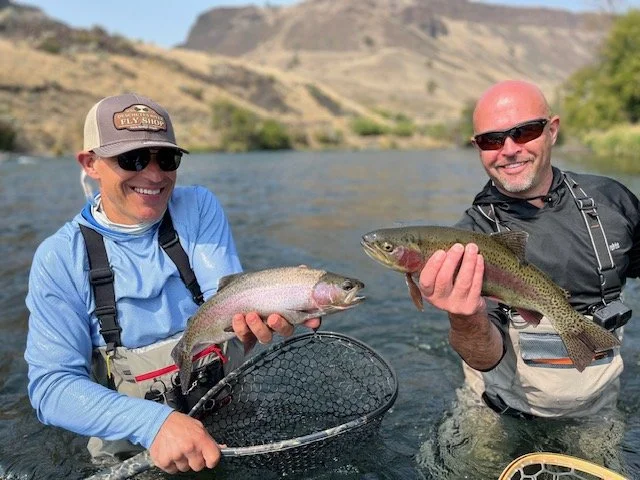Peer-Reviewed Science Article Tracks Tower’s Negative Influence on Lower Deschutes
If you’ve spent time on the lower Deschutes, you’ve seen it, slipped on it, had it foul your fly or lure. Now a peer-reviewed journal article penned by three scientists affirms it: among its other deleterious effects, operation of the Tower has led to increased growth of aquatic vegetation.
Former PGE Consultants Critique Tower Effects
By Rick Hafele
News flash!
Installation and operation of the selective water withdrawal at Round Butte Dam has resulted in a net reduction in water quality and aquatic habitat in the lower Deschutes River.
That’s the conclusion of a journal paper we recently received co-authored by three scientists with a long history of studying the lower Deschutes River and the effects of the changes wrought by the selective water withdrawal tower. Water Quality and Biological Response in the Deschutes River, Oregon, Following the Installation of a Selective Water Withdrawal, (click on title for link to the full article.) was published in the academic publication Water, and was written by Joseph M. Eilers, Tim Nightingale, and Kellie B. Vache.
All three authors had been previously hired as consultants by PGE to complete comprehensive studies of the water quality and aquatic biota in the lower Deschutes River. Their new analysis of the changes in the lower Deschutes following the installation and operation of the Selective Water Withdrawal (SWW) tower provides an important independent assessment of the tower’s impact on the lower Deschutes River.
Notable Findings
The beginning section of the paper provides an overview of the Deschutes basin and the purpose and operation of the SWW tower. It then describes their analysis of water quality and aquatic invertebrate data collected before and after installation of the SWW tower. Their analysis covers the key water quality parameters of temperature, pH, dissolved oxygen as well as a discussion of changes in nutrients (nitrogen and phosphorus). Changes in suspended algae, periphyton, macroinvertebrates and fish returns are also discussed.
Some of the more notable findings include:
The SWW has resulted in several unanticipated changes in the lower Deschutes River.
Operation of the SWW has resulted in measurable increases in river pH and dissolved oxygen.
The warmer target temperature used for the lower Deschutes may be incorrect. They state: These calculations suggest that the target temperature regime used to delay a favorable temperature in the lower Deschutes River may be greater than the temperature regime that anadromous fish experienced prior to anthropogenic management of flows in the basin.
There has been an increase in non-insect taxa, particularly of Oligochaete (worms), after the SWW tower started operating.
Regarding the Project’s goal of creating a “natural” temperature regime, they state: It appears that insufficient consideration was given to the fact that the primary source water for the temperature manipulation was a hypereutrophic reservoir. In other words, they failed to consider the poor water quality on the surface of Lake Billy Chinook.
They also correctly point out that the original modeling that predicted improvement in water quality would occur in the lower Deschutes River was incorrect. They go on to state: Most of the water quality models used in this study can reproduce water quality variables such as temperature, pH, and dissolved oxygen, but they struggle to capture spatiotemporal nutrient cycling through both biotic and abiotic components of natural systems. This gap between environmental engineering and aquatic ecology remains a significant challenge in trying to predict the consequences of hydrological modifications in river systems.
This is a significant admission given that future decisions about how to operate the SWW tower may well rest on the results of more modeling, modeling that we know is not capable of predicting complex ecological responses.
Overall, the simplest summation of the findings of this paper is once again expressed best by the following sentence from their discussion section:
We conclude that the installation and operation of the selective water withdrawal at Round Butte Dam has resulted in a net reduction in water quality and aquatic habitat in the lower Deschutes River.
These findings, while important to see in a journal paper, simply conclude what long-time anglers, river users and all those who love the lower Deschutes River have known since the tower started operating: The quality of the lower Deschutes River isn’t what it use to be! Remember this decline was created by the release of more surface water. And it can be improved by the release of more bottom water.
More From The Blog
Subscribe the the DRA Newsletter
The Deschutes River Alliance is your focused voice to protect the lower Deschutes River, its cold water flows and the fish and wildlife that are sustained by them. We send regular emails with important data and news about the lower Deschutes River. We will not sell your contact information to others.
How to Support the DRA
Everyone wants clean, healthy water in the Deschutes River. Oregonians cherish our clean and healthy waterways to provide drinking water, wildlife habitat and recreational activities. The lower Deschutes River is a federally designated Wild & Scenic River, and a national treasure. It must be protected for the environmental and economic health of Central Oregon. By working together we can return the lower Deschutes River to full health.














